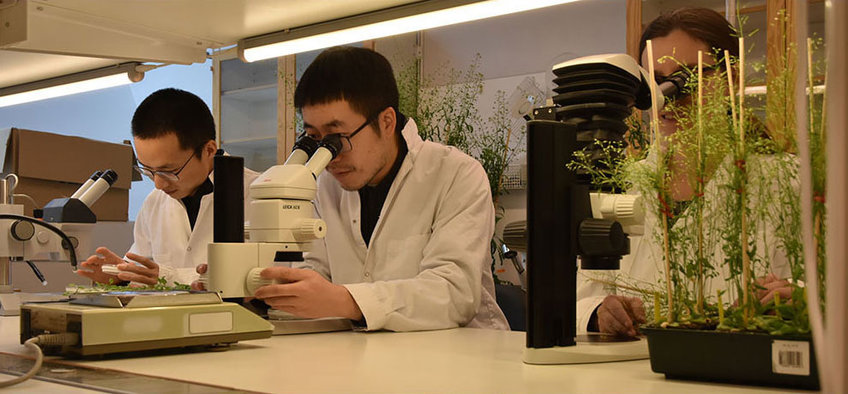
Our Projects
Genomic Imprinting in Plants
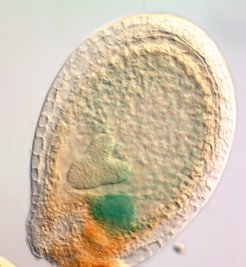
Genomic imprinting is an epigenetic phenomenon rendering alleles to be specifically active depending on their parent-of-origin. In plants, imprinted genes are mainly confined to the endosperm, a tissue regulating the nutrient transfer from the mother to the offspring. Our research focuses on elucidating the functional role of imprinted genes for endosperm development. Our work revealed that misexpression of imprinted genes establishes hybridization barriers between related plant species and between plants that differ in ploidy. We are elucidating the functional role of these genes in the endosperm and their mode of regulation. We found that paternally-expressed imprinted genes are regulated by Polycomb group proteins, which establishes a new mechanism of imprinted gene control that we currently explore.
MADS-Box Transcription Factors Controlling Endosperm Development
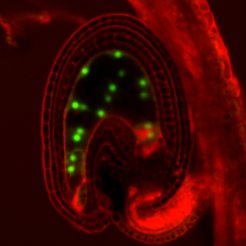
MADS-box transcription factors (TFs) are ubiquitous in eukaryotic organisms and play major roles during plant development. Nevertheless, their function in seed development remains largely unknown. We have shown that the imprinted Arabidopsis thaliana MADS-box TF PHERES1 is a master regulator of paternally expressed imprinted genes, as well as of non-imprinted key regulators of endosperm development. Strikingly, we found that DNA-binding motifs bound by PHERES1 have been distributed by RC/Helitron transposable elements, providing an example of molecular domestication of these elements. Our work suggests that the distribution of PHERES1 binding sites throughout the genome has facilitated the recruitment crucial endosperm regulators into a single transcriptional network. We are currently testing this model. We furthermore aim at identifying PHERES1 interacting proteins to be able to reconstitute a functional PHERES1 complex.
Mechanism and Function of Endosperm Cellularization
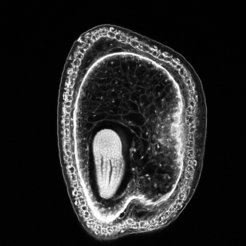
Seed development in flowering plants is initiated by double fertilization of two female gametes by two sperm cells; fertilization of the haploid egg cell will generate the diploid embryo, while fertilization of the diploid central cell will generate the triploid endosperm. The endosperm serves to nourish and support the embryo by delivering nutrients acquired from the mother plant. Endosperm development is a complex process; in most flowering plant species free nuclear proliferation without cytokinesis (syncytial phase) is followed by a cellularization phase that is initiated in a region surrounding the embryo and then proceeds from the outer to the inner region of the endosperm. In Arabidopsis, endosperm cellularization coincides with the early heart stage of embryo development. Endosperm cellularization failure results in embryo arrest and seed abortion, a phenomenon frequently occurring in response to interploidy and interspecies hybridizations. Why endosperm cellularization is essential for embryo survival is still mysterious; our research aims at solving this question.
Plant Speciation Mechanism
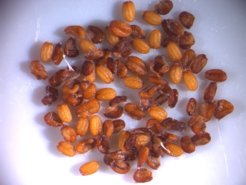
Polyploidization is a widespread phenomenon among plants and is considered a major speciation mechanism. Polyploids have a high degree of immediate post-zygotic reproductive isolation from their progenitors, as backcrossing to either parent will produce mainly nonviable progeny. This reproductive barrier is called triploid block and is caused by malfunction of the endosperm. We are interested in understanding the mechanism establishing the triploid block and its relevance for polyploid speciation.
We are furthermore interested in testing whether similar mechanisms underpinning polyploidy-mediated hybridization barriers also account for interspecies hybridization barriers. To test this hypothesis we investigate interspecies hybridizations and test the effect on endosperm development with the ultimate goal to identify the molecular mechanisms causing endosperm failure after interspecies hybridizations. We explore this question using the species pair Capsella rubella and Capsella grandiflora. Together with the group of Adrien Sicard (SLU) we also investigate the impact of these barriers under natural conditions.
Small RNAs Controlling Plant Reproduction
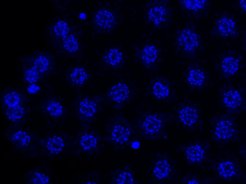
Plants that differ in ploidy are reproductively isolated by a hybridization barrier that is established in the endosperm, referred to as triploid block. Our work uncovered a new pathway leading to the formation of small RNAs from transposable elements that establish a hybridization barrier in the endosperm. We currently investigate when during pollen development these siRNA are generated, how they are the transported and what is their mode of action in the endosperm.




